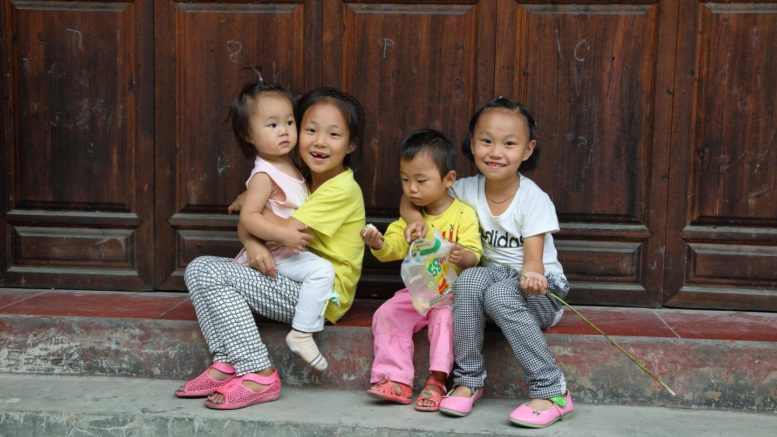Deaths of children and adolescents in China due to infectious diseases were becoming rare prior to the covid-19 pandemic. Courtesy of Marisa Estivill
Deaths of children and adolescents in China due to infectious diseases were becoming rare prior to the covid-19 pandemic, according to a new study.
Quarantinable conditions with high death rates such as cholera and plague had effectively disappeared and many traditional and vaccine-preventable infectious diseases of childhood including diarrhea, measles and rubella became uncommon.
The research, led by the Murdoch Children's Research Institute (MCRI) and Peking University and published in the British Medical Journal, found the leading causes of death from infectious diseases in China had shifted markedly over a 10 year period from rabies and tuberculosis to HIV/AIDS.
But overall deaths from infectious diseases decreased steadily between 2008-2018 from 0.21 per 100 000 population in 2008 to 0.07 per 100 000 in 2017.
MCRI professor George Patton said until now no study had reported on recent trends in infectious diseases among children and adolescents in China.
The new research analyzed national surveillance data across 31 mainland Chinese provinces. It involved 5 million students aged six to 22 years, and involved 44 notifiable infectious diseases.
Study author Yanhui Dong, from Peking University, said China had made 'remarkable progress' in infectious disease control in this age group.
But Dong said while animal-to-human infections like bird flu remained low, the potential for major outbreaks like SARS-CoV-2 remained a very real possibility.
After the SARS outbreak in 2003, China made substantial investments in laboratory testing, surveillance system enhancement, national intervention programs for specific diseases, and collaboration with international partners.
Patton said despite the progress, China faced new challenges in responding to seasonal and unpredictable new infectious diseases in children and adolescents.
Comprehensive national surveillance systems and rapid proactive government responses would be an integral part of future infectious disease control in China and around the world, he said.
"China will need to continue its successful efforts against older infectious diseases of children and adolescents, including measles, tuberculosis, rabies, and scarlet fever and now scale-up vaccination for mumps, seasonal influenza, and hepatitis B," Professor Patton said.
"Along with the rest of the world, China will also need greater vigilance around the highly transmissible seasonal and unpredictable diseases that we have seen in the past two decades including SARS, MERS, novel influenzas, Zika, Ebola and now the new SARS-CoV-2 virus."
Despite expanding the national childhood immunization program in 2008, the most common infections in early childhood in China were still vaccine preventable diseases and gastrointestinal and enterovirus diseases, such as hand, foot and mouth disease.
Sexually transmitted diseases and bloodborne infections largely affected older adolescents.
Dong said the significant increase of HIV/AIDs and STI's among 15-24-year-olds seemed related to high risk sexual behaviours and poor awareness of infection risks.
"There is a pressing need for more school and university-based sex education programs as well as peer education, and access to rapid testing for sexually transmitted infections," Dong said.
Dong said the data especially highlighted the need for prevention programs to pivot towards a different set of risks, which would also require different interventions.
Researchers from the Chinese Center for Disease Control and Prevention, the University of Melbourne and The Royal Children's Hospital also contributed to the study.
Reference: Yanhui Dong, Liping Wang, David P Burgner, Jessica E Miller, Yi Song, Xiang Ren, Zhongjie Li, Yi Xing, Jun Ma, Susan M Sawyer and George C Patton. 'Infectious diseases in children and adolescents in China: analysis of national surveillance data from 2008 to 2017,' BMJ. DOI: 10.1136 bmj.m1043

Be the first to comment on "Rapid Infectious Disease Shifts in Chinese Children and Adolescents Prior to COVID-19"